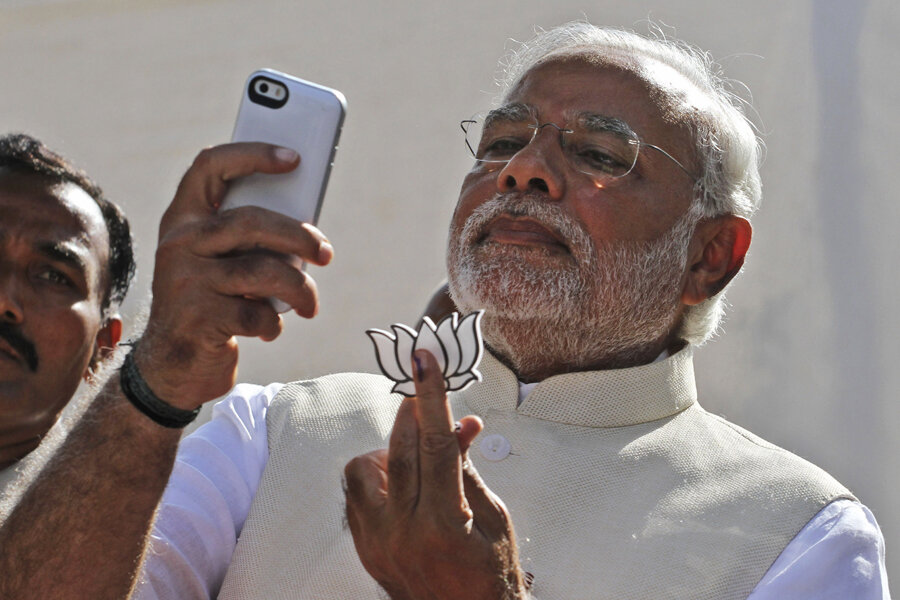Obama and the Pope top list of world leaders on Twitter
Loading...
With 43.7 million followers, President Barack Obama (@BarackObama) leads the pack of world leaders now using Twitter to get their messages out. But Pope Francis (@Pontifex) holds the most influence.
Once derided as a forum for a large number of inconsequential updates, Twitter has moved firmly into the globe's ultimate executive offices, with heads of state and other government leaders increasingly tapping the medium to influence public opinion. According to the “Twiplomacy 2014 Study” released yesterday by public relations firm Burson-Marsteller, more than two-thirds of all "heads of state and heads of government" have set up personal Twitter accounts since the social network launched in 2006.
Pope Francis, with 14 million-plus followers across nine different language accounts, is not only highly influential but second only to Obama for number of followers. The report named the pope the “most influential tweep” because he averages over 10,000 retweets for every tweet on his Spanish-language account and 6,462 on his English-language account. Spanish is the top language used by world leaders for tweeting, followed by English.
Leaders from the world’s most populous nations prove that population size does matter on the social network. Indonesian President Susilo Bambang Yudhoyono (@SBYudhoyono) has 5.07 million followers, and newcomer Narendra Modi, prime minister of India, (@narendramodi) has 5 million followers. As an institution, the White House (@WhiteHouse) tops the list with 4.98 million followers.
The report notes that the most followed world leaders only follow a few other leaders and use Twitter as a “one-way broadcasting tool” and are “hardly conversational” due to the size of their follower base. Obama’s account doesn’t follow many other world leaders and focuses his tweets for a domestic American audience, avoiding many of the hot-button foreign policy issues he is currently being critiqued over.
Some world leader tweets are simply mundane:
Others have been used to spread news, such as this tweet from the Malaysian prime minister:
And others show a more joking side of world leaders:
While top leaders might not have the time to respond to tweets, the report found that ministers and their respective ministries are increasingly interacting with each other, allowing for the option of direct messaging.
French Foreign Minister Laurent Fabius (@LaurentFabius) is the most connected with his peers, followed by the Swedish Foreign Minister Carl Bildt, (@carlbildt), who isn’t afraid to broadcast his views on international affairs and argue with other leaders and governments:
Mr. Bildt is among only a handful of world leaders who do their own tweeting, according to the report.
The two world leaders who interact the most with their followers are both in Africa: Uganda's prime minister (@AmamaMbabazi) and Rwandan President Paul Kagame (@PaulKagame).
Not surprisingly, news trends can have a big impact on who's listening to all those leadership tweets. The report noted that the foreign ministry of Ukraine (@MFA_Ukraine) and Russian President Vladimir Putin’s English-language account (PutinRF_Eng) have seen their followers surge since the start of the crisis in Ukraine.
So-called hashtag diplomacy also increased over the last year with campaigns including #BringBackOurGirls and #UnitedforUkraine, which spawned the first “hashtag battle” with Russia mocking Western government’s use of the hashtag and employing it themselves. Russia also started the hashtag #BringBackOurBoys to raise awareness about two Russian journalists captured in Ukraine, according to the report. The same hashtag gained further traction after three Israeli teens were allegedly kidnapped in the West Bank earlier this month.
But not everyone is holding up their end of the bargain. The report found more than 100 accounts it analyzed were dormant, while others get reactivated right before elections. Thirty-two countries have no Twitter presence at all.
Still, when compared to celebrities like Katy Perry (@katyperry) with 54 million followers and Justin Bieber (@justinbieber) with 52.5 million followers, most world leaders and diplomats have a ways to go.








